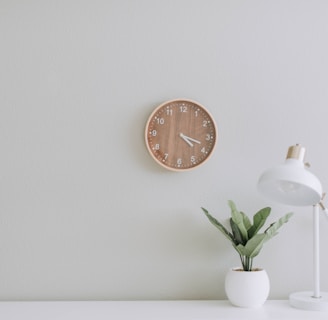Do you have damp in your home? Discover how to prevent it with waterproof barriers and coatings.
1/13/20254 min read


Understanding humidity in the home
Dampness in the home can arise from a variety of causes, and understanding these causes is crucial to effectively addressing the problem. One of the main factors contributing to dampness is water infiltration, which can occur through deteriorated roofs, walls, or foundations. Heavy rains or snowmelt, combined with poor drainage, can cause water to infiltrate the home's structure, increasing humidity levels.
Another significant factor is condensation, which often occurs in places where temperature fluctuates, such as windows, bathrooms, and kitchens. When warm, humid air comes into contact with cold surfaces, condensation forms, which can quickly lead to the growth of mold and mildew. Structural problems, such as cracks in walls or poor waterproofing, can also exacerbate dampness in a home.
Identifying the symptoms of damp is essential to preventing further damage. The most common signs include damp patches on walls, moldy odors, and the appearance of mildew on surfaces. Ignoring these signs can lead to structural deterioration and increase long-term repair costs. This isn't just an aesthetic problem; it can also impact the health of residents. Living in an environment with high levels of humidity can contribute to respiratory problems, allergies, and other health conditions. Therefore, it's vital to address dampness in the home promptly and effectively, ensuring a healthier and more comfortable environment.
Types of impermeable barriers
Waterproof barriers are essential for combating moisture in homes. There are several types of products on the market, each with specific characteristics that can be adapted to different needs and situations. One of the most common options is polyethylene membranes. This material offers excellent water resistance and is especially useful in underground applications. Polyethylene membranes are easy to install and can be used in basements or on foundation structures, as they act as an effective barrier against water ingress.
Another popular alternative is waterproof paints. These paints are formulated to repel water and are ideal for application on interior and exterior walls. In addition to their waterproofing function, these paints provide an aesthetic finish, making them an attractive option for those looking to combine functionality and design. However, it's important to note that waterproof paints may require periodic maintenance and reapplication depending on weather conditions and wear.
Polypropylene sheets represent an additional option. This type of barrier is particularly useful in applications where flexibility and tear resistance are required. The sheets are commonly used in roofing and facade cladding. Their ability to withstand adverse conditions makes them an effective solution for preventing moisture. However, their installation can be more complex compared to other types of barriers, which may require professional assistance.
In conclusion, choosing the right waterproof barrier will depend on the project specifications and the specific moisture conditions in the home. Each type offers distinct benefits, allowing homeowners to make informed decisions to protect their homes.
Waterproof coating installation techniques
Installing waterproof siding is essential to protect various areas of the home that are prone to moisture, such as basements, bathrooms, and kitchens. This process requires attention to detail and a systematic approach. Below is a step-by-step guide to ensure effective installation.
Before starting the installation, it's essential to properly prepare the surfaces. This involves cleaning the area of any dirt, mold, or remnants of previous materials. For concrete surfaces, it's recommended to use a pressure washer or a stiff-bristled brush. Also, make sure there are no cracks or holes in the surfaces; if any, they should be repaired with a suitable sealant before proceeding.
As for the necessary tools, the following items are suggested: a roller or brush for applying the coating, a putty knife for smoothing the surfaces, and a saw if you need to cut panels to size. Masking tape will also be helpful to ensure the edges are properly sealed, as well as gloves and protective eyewear for personal safety.
It's crucial to follow the manufacturer's instructions carefully. Each waterproofing coating product may have specific requirements regarding drying times, application quantities, and application techniques. Ignoring these guidelines can compromise the coating's effectiveness and, consequently, the effort invested in installation.
Finally, it's important to avoid common mistakes. A common mistake is applying too thin a layer, which can result in leaks. Another mistake is not allowing proper drying between coats. By following these steps and recommendations, you'll achieve a waterproof coating installation that provides lasting protection against moisture in your home.
Long-term maintenance and prevention
Proper maintenance of impermeable barriers and coatings is essential to ensure their long-term effectiveness. One of the best practices is to conduct periodic inspections of treated areas, paying attention to signs that may indicate future problems. These signs include moisture stains, peeling on treated surfaces, or unusual mold buildup. If any of these signs are detected, it is advisable to act immediately to prevent further damage.
If minor repairs are needed, it's essential to have the right tools and products. For example, if you notice wear on the coating, it's often enough to apply a new layer of waterproofing material to the affected area, following the manufacturer's instructions to ensure a proper finish. This not only revitalizes the barrier but can also extend its lifespan.
In addition to regular inspections and repairs, implementing preventative measures is also key to humidity control. An effective option is the use of dehumidifiers, especially in condensation-prone areas such as basements or bathrooms. These devices help maintain humidity levels within an optimal range, thus reducing the possibility of mold and mildew growth.
On the other hand, ensuring adequate ventilation in enclosed spaces is equally important. Opening windows and doors regularly or installing exhaust fans in critical areas can help improve air circulation, which contributes to reducing accumulated humidity. These practices, together, not only prevent humidity problems but also promote a healthier and more comfortable home environment.
Our social media
info@paletes1992.com
+34 601 14 43 36
© 2024. All rights reserved.
